Types of Mirrors (Styles & Designs)
Here we share our types of mirrors guide, including the different kinds, styles, and interior design ideas.

Ancient Egyptians followed with polished copper, Mesopotamians with burnished metal, Central and South American’s polished stone mirrors, and China’s polished bronze and metal alloys. With the high value of precious metals, mirrors are signs of wealth and position.
Despite its distant past, though, today’s mirrors are said to be invented by German chemist Justus von Liebig. And they have become affordable and more accessible to the common people.
With the development of mirrors, they now range from simple, functional kinds to lucrative and decorative ones. You can now consider several types of mirrors, including the following.
Quicklist: Types and Styles of Mirrors You Should Know
- Plane
- Spherical
- Non-Reversing
- One-Way
- Two-Way
- Silvered
- Custom
Different Mirror Styles
- Mounted
- Freestanding
- Behind-the-Door
- Wall-Panel
- Mirrored Furniture
Plane Mirror
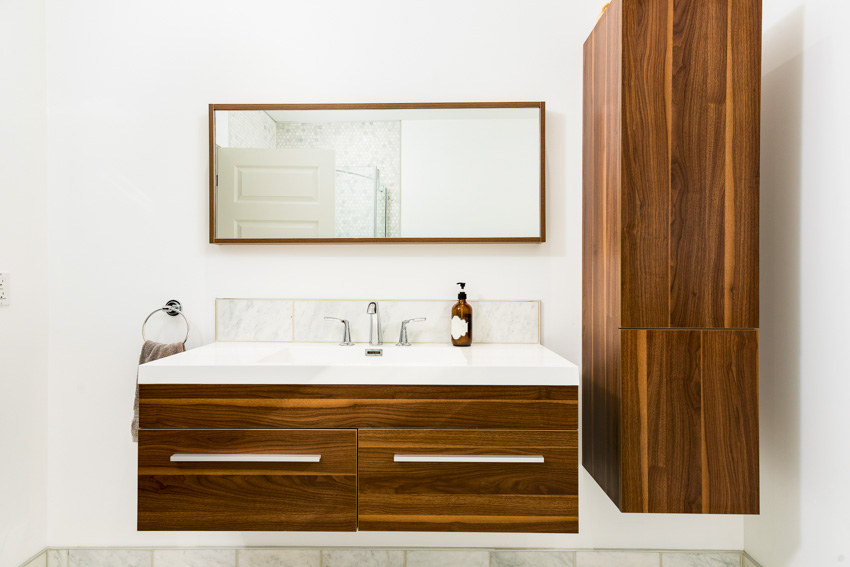
They are made from glass and metal alloys. The flat piece of glass is coated with a metal alloy responsible for the reflection and protection of the mirror’s surface.
Design
The plane mirror’s design is known for its flat reflective surface. If preferred, it can also be structured slightly curved.
While the primary design of the plane mirror is for functionality, it can also be designed in fun shapes, from basic to animal shapes.
There are a variety of designs in the market to choose from. You can opt for the classic cheval mirror or the modern mosaic-styled one.
Uses
The primary usage of a plane mirror is image reflection. It produces almost-identical images, from size to shape.
The virtual reflection is realistic but laterally inverted, meaning the right will always look like the left and vice versa.
Materials
They are made from thin plate glass pieces responsible for producing realistic and identical images. The plate glass also helps protect the surface so it won’t tarnish easily and quickly.
There are also some made from gallium and mercury, which are both reflective in a liquid state.
Sizes
These come in varied sizes and even shapes. They can be small to fit a compact or even as large as a big wall (which many dancers install in their studios).
To be honest, your imagination is only the limitation of the sizes that plane mirrors can come in.
Spherical Mirrors

The convex type bulges outward, distorting the reflection. This results in a smaller distorted image compared to the actual object.
Some examples of convex mirrors are passenger-side and dressing-room reflective glasses.
Opposite to convex vanity glasses, the concave type curve inward, making enlarged reflections of images (which seem upside down from away but flips once you get near).
Some daily uses of this kind of mirror include shaving, car headlights, makeup, and dental reflecting surfaces.
Design
Spherical reflective panels are named as such because they are curved and appear half a sphere.
Concave and convex mirrored surfaces are examples of spherical mirrors, and while the concave mirror curves inward, the convex mirror curves outward. Reflections are also distorted when using these mirror types.
Uses
When using spherical silvered glasses, there are only 2 effects that also work as their uses. It either magnifies an image or makes it smaller, and the reflections appear distorted.
These are concave and convex mirrors, respectively. The former focuses on the center point of the mirror, while the latter focuses on the edges.
Materials
Spherical mirrors are made from polished metal or glass. The materials are guaranteed to be of high quality and reasonably priced too.
Sizes
Due to different uses, spherical mirrors come in different sizes. For instance, dental mirrors are considered concave mirrors and are considerably small due to how they are used.
Car headlights, another example of concave mirrors, are bigger than dental mirrors. And dressing room reflective panels, examples of convex mirrors, are bigger than the first two.
Non-Reversing Mirror

A non-reversing mirror, also called a true or flip mirror, showcases an eerie reflection of yourself and something else.
Since we are used to flat mirrors, seeing ourselves in a non-reversing mirror can be weird since it reflects your movement and right and left profiles.
Design
A regular non-reversing silver-backed glass involves two mirrors joined together at a 90-degree angle. Besides that, though, three main designs can be found in the market.
This includes the following:
- Surface types are joined at an exact spot, making it seem non-existent
- Concave types and, at some point, there will appear a non-reversing image
- Angled ones that create a surface with curves and bend that create a disco-ball effect
Uses
Non-reversing mirrors are meant to present an image in actuality and as is with the subject.
These have more commercial applications than the other previous types. They are most often used in retail outlets and stores.
Materials
Non-reversing ones are not made from anything special. They are just comprised of two flat mirrors combined at a 90-degree angle to have this “non-reversing” effect.
Using rectangular/square flat mirrors is the way to go since other shapes may not successfully create the same effect.
Sizes
Most non-reversing mirrors are large (like an entire wall) primarily because they are used commercially. Like other mirrors, though, they come in different shapes and sizes.
The design doesn’t allow it to be small since two mirrors are used. Most would also prefer at least medium-sized ones to accomplish and see its effect.
One-Way & Two-Way Mirrors
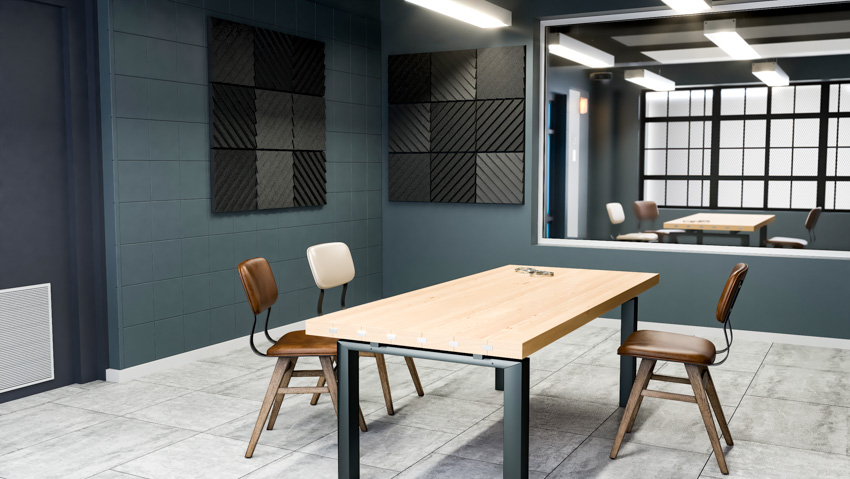
Remember that scene where police officers will interrogate suspects in one room where other officers see the suspect, but the people inside the room can only see a mirror? That’s the two-way mirror!
Design
One-way and two-way mirrors are designed with a coated see-through panel, which makes them reflective and transparent.
The one-way reflection and transmission are accomplished by keeping one side dark and the other bright.
You will be able to see from the dark side but not from the bright side. On the bright side, though, you won’t be able to see through it.
Uses
One-way and two-way mirrors have specialized lighting that allows them to be unique as they are. Using aluminum on its surface for the reflection makes this a two-way mirror.
Only half of the light is reflected, and the other half goes through the glass pane, resulting in an effective two-way reflecting glass. These are normally used in the following:
- Interrogation rooms
- Experimental labs
- Security observation decks
It’s important to note, though, that in some states, for example, California, installing a two-way glass panel for surveillance in restrooms, shower areas, fitting rooms, and locker rooms is illegal. Source: [Legal Match]
Materials
Minerals, including aluminum, tin, silver, or nickel, are important in creating effective one-way and two-way mirrors. Other materials used for these types are glass and paint.
You will need a glass to serve as the base, while the minerals are needed to coat the glass panel for the reflection.
After coating the glass with one of the minerals you’ve chosen, the next step is to cover the glass with copper to help protect it from oxidation. And finally, the paint will follow as the last step.
Sizes
These also come in various sizes, depending on where you plan to install them and how you will use them.
The mirrors need to be small for security cameras to appear still hidden. For interrogation rooms, though, it can be the size of half a wall or even the entire wall.
Silvered Mirror
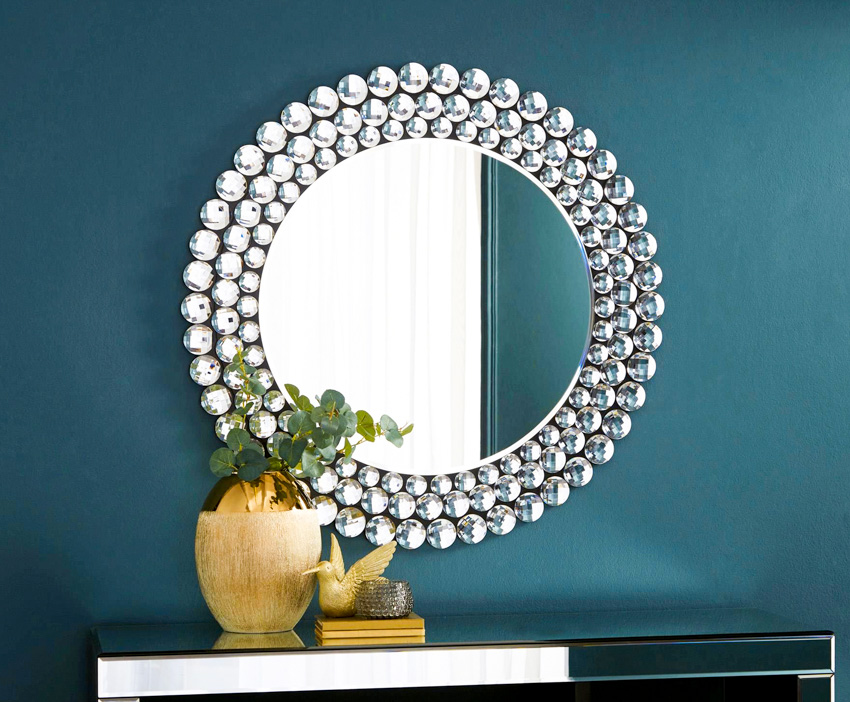
This is the factor that differentiates it from other types of mirrors. These silvered mirrors are usually decorative in rooms, adding aesthetic value.
Design
Silvered mirrors have a simple design involving silver coating responsible for their reflective factor.
People started “silvering” their mirrors with a mercury and tin mixture, but it all changed in the 18th century when people started using pure silver instead.
Other mixtures used besides silver are aluminum and other compounds.
Uses
Silvers (and similar compounds) make a looking glass stronger, non-corrosive, and more durable to last longer. They are also highly reflective, which makes them perfect for making mirrors. Some of the uses of this kind of mirrored surface include the following:
- One-way and Two-way Mirrors
- Rearview Mirror
- Dental Mirrors
These are also popularly used for decor and entertainment. They can also be used for signaling in technology. You can even make this your project during your leisure time.
Materials
These need highly reflective materials to accomplish their roles. When unavailable, other mixtures used in place of silver include stuttering aluminum and other compounds.
Sizes
They come in various sizes and shapes, depending on how they are used and where they will be used or installed.
One-way and two-way reflecting glass types are popular examples of silvered mirrors, and when installed in interrogation rooms, they are expected to be larger than your regular compact mirror.
Some silvered mirrors are also decorative in that they are installed in the living room and bedroom. Their sizes and shapes would also be varied.
Custom Mirrors
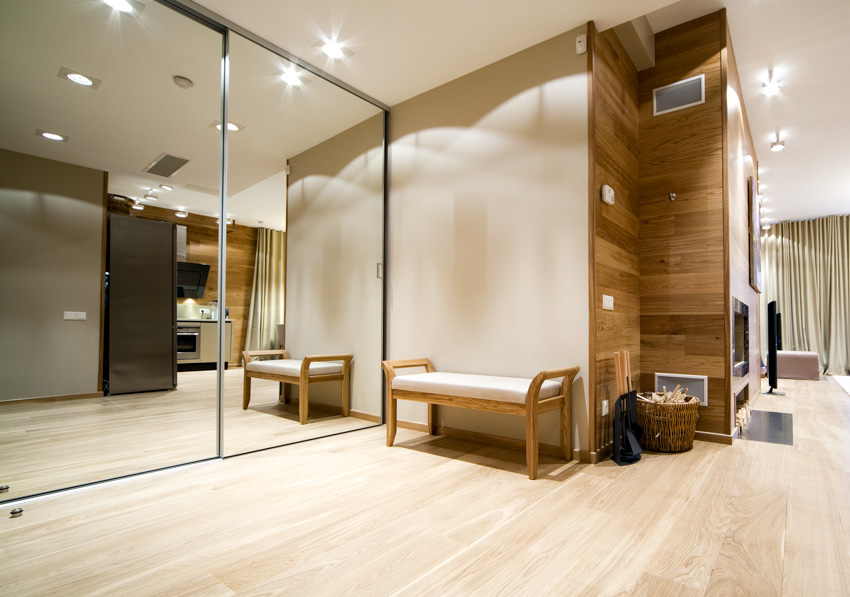
Some designs are unique, and the limitation can only be in the mind of the person requisition for its customization.
You can have them customized in traditional style, Victorian design, formal style, or modern style. Whatever you want will be followed.
Design
Sky’s the limit in terms of design when custom mirrors are concerned.For instance, once ordered by a company for a dressing room in a mall can come in full-length mirrors.
On the other hand, a custom mirror ordered by an individual though for her minimalist home will have a simple design. They can come in specialized frames, shapes, and colors. The design of a custom mirror will always be as instructed.
Uses
The use of custom mirrors depends entirely on who had they customized.
These focus on increasing the mirror’s size to accommodate more than one person simultaneously. And that’s the specific use for that particular custom mirror.
On the other hand, it is entirely different for custom mirrors designed to add aesthetic value to a home.
Materials
The materials used for this type range from the most common materials usually used to create mirrors to the rarest materials you didn’t think possible.
You may want to use tin or aluminum for the coating or choose silver if you can afford it. In addition to that, the materials used for frames are varied and would depend on what you want and can afford.
Sizes
Similar to its designs and materials, the sizes vary- some are handheld while most are wall-mounted- and would depend on the individual having the them tailored.
Custom mirrors for a mall’s dressing room will be large while for the home would be smaller than that.
Different Mirror Styles

Your choice of what specific type and style to consider will depend on what you need the mirror for. Where will you use the mirror, and for what purpose?
After answering these questions, the next step is knowing your options. You’ve been presented with the different types so here are the different mirror styles to consider.
Mounted Mirror
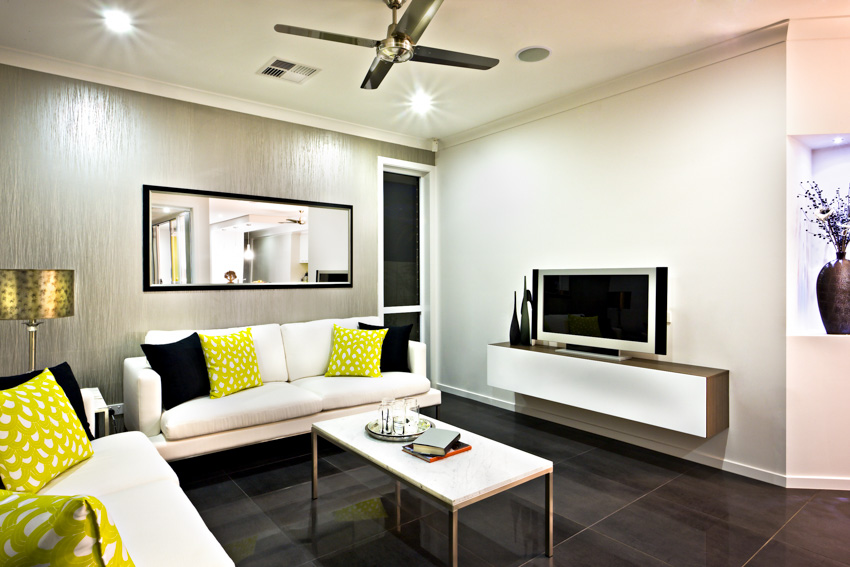
This is the reason why most mounted mirror types are found in bathrooms. They can also serve as home decor when installed on the walls in the living areas.
Freestanding Mirror

“Consider leaning mirrors against the wall rather than hanging them. Besides creating a casual feel, the slight tilt of a leaning mirror gives a room an interesting perspective.” – Jeffrey Katz, Mirrors
One good example of this type of mirror is a freestanding full-length mirror, which is normally used in fitting rooms in clothing stores. It can also be installed in bedrooms for your walk-in closet.
Behind the Door Mirror

Also known as an over-the-door mirror, it helps save space, is affordable, and is easy to install.
Mirrored Wall Panels

These are heavy due to their solid wood frames. If you plan to use this type of mirror, ensure you know how to safely and securely hang a heavy mirror.
Mirrored Furniture

One popular example of this is a mirrored tabletop. A mirrored tabletop can result from customizing a coffee table to protect its surface from scratches.
Uses for a Mirror In Interior Design

But what can it do for you and your home? Here are some uses for the mirror.
Produces Reflection

It will be helpful in the bathroom or bedroom to check how your clothes look on you and fix your hair and makeup (if you’re using some).
Brightens Up Space by Enhancing Natural Light

Makes a Room Feel Bigger
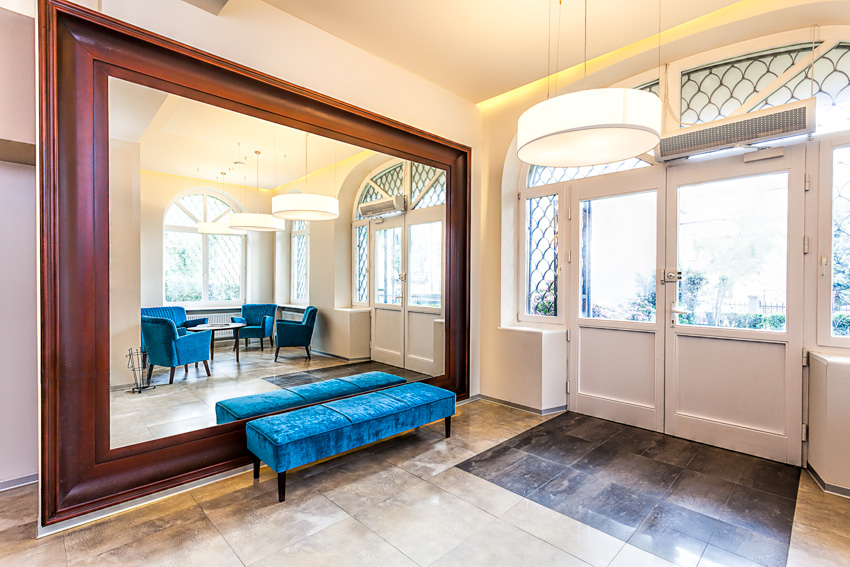
Adds Aesthetic Value

Hides Imperfection

If you hang it for functionality or decor, you can hide other imperfections on your walls.
Is It a Mirror Glass?

The glass must be coated with minerals like aluminum or silver to give it its known reflective characteristic.
“The use of glass as mirror is well established in interior design and, conventionally, it is used to give an accurate reflection of the room that contains it.” – Drew Plunkett, Sam Booth, Furniture for Interior Design
Whether a glass was sprayed with paint for the mirrored effect or a cool glass bonded with heated aluminum in a vacuum, both reflecting surfaces would still use glass.
What Makes Mirrors Expensive?

But what makes it expensive in the first place? Here are some factors affecting the price of a vanity glass:
Materials

Cheap glass has a higher chance of being an imitation and producing a distorted reflection. In addition to that, high-quality glass lasts longer compared to cheaper glass.
Besides the glass, the frame of the looking glass also affects its price. While some are frameless, some have a costly frame that increases the price of the mirror itself. A three-way silvered glass consists of three cuts, making it pricier than your average vanity glass.
Craftsmanship

This means that the maker should have dedicated time and effort to creating it to produce polished and high-quality reflective glasses.
Size & Design

This means that the reflective sheeting installed in dressing rooms is more pricey than the one you have in your compact.
What Type of Mirror Do Department Stores Use?

The store’s corners can be viewed using them, increasing security and protection. Security cameras can also be installed within the camera for stronger security.
Some department stores choose dome reflective glasses to help them improve their security. Dome or hemispherical ones are installed on the ceiling, offering a wide-angle and 360-degree view of the room or store.
If not dome mirrored surfaces, some also use the half-dome (providing a 180-degree view) and quarter-dome types (installed between the ceiling and two walls). See more related content in our article about how to fix a cracked mirror on this page.








